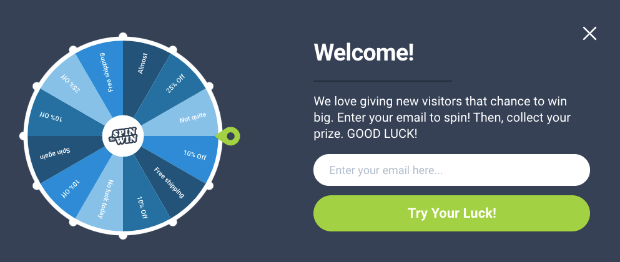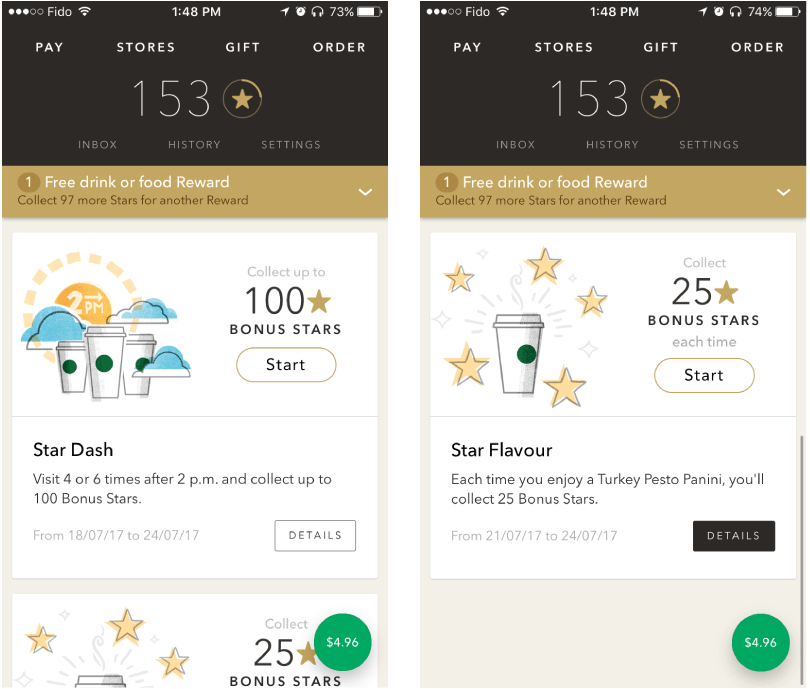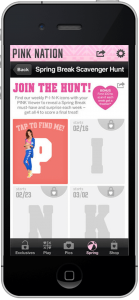Gamification In Marketing: 6 Design Tips You Need To Know
Nas noticed something common in their 15-year-old niece’s, 22-year-old brother’s, and 40-year-old uncle’s content consumption habits. Irrespective of the platform they engaged with, they were all hardcore into games.
Looking at this, they realized that if this trend can span across three generations just in their home; it has many benefits in marketing. Can this be the next big thing in branding and marketing? Is it possible to improve their ROI on campaigns using games?

We all know how hard it is to hold anyone’s attention today online and offline. But people are happy to spend hours playing games and engaging with gaming content?
While these sounds too good to be true, implementation can be a challenge. Not every brand has the means to produce games to promote their brand or product.
Enter gamification.
Yes, if you want to involve games in your promotional strategies without producing expensive games, we give you the next best thing: content gamification in marketing.
What is gamification? How can it help you? Does it really work, and how to implement it?
This blog by Kimp covers everything you will need to design gamification in your marketing strategies.
Let’s get started.
Gamification in Marketing
Does gamification sound like a made-up word to you? Do you want to know what it is?
Well, gamification in marketing is the technique of leveraging traditional gaming strategies in marketing to improve engagement, increase the ROI of the campaigns, and reduce friction in the shopping process.
And it is not a made-up word. The Oxford dictionary made it an official word in 2011. Yes, the word has been around for so long.
But the concept of gamification has been around for longer than that. The sales world has always been looking for unique ways to attract consumers and stand out from the competition.
Do you remember the local games your community recreation center held with a branded prize at the end? Did you enter a lucky draw contest or take part in any radio challenges for a coupon?
All of them were gamified marketing campaigns.
But what made it popular enough to see the word everywhere?
Well, our growing engagement time on our mobile phones, the exponential growth of video games, and the overcrowded traditional marketing content on the internet are a few reasons.
To understand the reasons for the success of gamification strategies in marketing, let us move on to the next section.
Benefits of Gamification in Marketing
Even for people who love games, the marketing connection of gamification can be confusing. And there is always the dilemma in implementing anything new: Will customers like it, and does it match our brand persona?
Well, when you look at the benefits of gamification in marketing, you will see that they outweigh the risks, if any.
1. Gamification improves engagement
Verizon boosted browsing time by 30% when it implemented gamification strategies. Increasing the time people spend on your website, apps, social media channels, emails, and so on is a major challenge in marketing. We are the scrolling generation with an attention span of fewer than 10 seconds.
Gamified content pulls the audience in and promises them an enjoyable time without actively selling anything. This gives a boost in engagement.
2. Gamification translates into revenue
Improved engagement times directly impact your sales and revenue numbers. The more people spend time with your brand, the more likely they are to purchase from you. Even beyond this, customers appreciate brands that do not try to actively campaign all the time.
In fact, studies show that 60% of customers agree they are more likely to buy a brand they enjoyed a game with.
3. Gamification enhances brand recall and emotional connectivity
Games are really really fun. Will you forget a brand that engaged you for over five minutes? Not likely, right? And when you design the gamified content well, consumers can instantly recall the brand whenever they encounter it.
Above all, games provide emotional engagement and a huge adrenaline rush. Everyone wants to win, and most people keep trying until they do. This builds an emotional bond between the brand and the customer.
4. You can impact Gen Z with gamification
It is a well-known consensus in the marketing world that Gen Z is the most difficult to reach. Their ability to skip ads and consume content outside the traditional marketing channels has made connecting a challenging task. Even banner ads are seeing a low success rate as the current generation has banner blindness, wherein they end up ignoring ads entirely.
But, if you employ gamification in your marketing strategies, you can do that.
Gen Z consumers value creativity, meaningful interactions, and above all love video games. So, if you do not want to fall prey to the skip ad button or the infinitely scrolling thumb, work with gamification.
The Starbucks loyalty program is a testament to gamification’s success in Gen Z marketing.
Gamification in Marketing: 6 Design tips you need to know
The importance of design in gamification must be obvious. It is an immersive visual medium of communication that you want your consumers to engage with. The quality of your design will impact the effectiveness of your campaign.
Do you want to know how to improve your design so that gamification brings in the results you seek?
Read on to know more.
1. Design as per your target audience
We have repeatedly mentioned that a major difference between artwork and design is that design has a purpose. It has a message to convey. And that communication can only be successful when you have tuned the design as per the target audience.
Knowing the target audience is even important for gamification design because not everyone in your audience enjoys the same type of games.
It changes by :
- Demographics: For example, while the younger generation may like to solve complex puzzles and jump through hoops, you may need something simpler for the older generation.
- Customer journey: Stephanie Hermann suggests game challenges must also align with the customer journey. Yes, do not expect a discovery stage consumer to spend more than a minute interacting with you, while a loyalty program needs a longer engagement.
- Cultural and geography: In a Forbes Interview, Gina Michnowicz recommends tailoring the content by regions as well since it has a huge impact on the tasks, rewards, and difficulty levels as well. So even if it is a global program, edit the regional content for maximum impact.

In the above example, the brand manages to achieve two things through gamification:
- It provides a quick peek into the diverse brands it caters to
- And garners engagement
Kimp Tip: Do not overcomplicate design concepts. If you know your audience, you can choose design elements they will enjoy beyond the game itself. For example, it will overjoy 90s kids to see Tom and Jerry in a game, while the current generation will prefer TV show icons.
Need a team to translate your research points into impactful designs? Try Kimp Graphics!
2. Work on omnichannel integration
While many argue that gamified content only works on some platforms, we constantly see examples of brands pushing the envelope. You may think only landing pages, newsletters, and social media are for gamification in marketing, but there is more.
If you can take the game experience to the customer, the channel becomes irrelevant. Yes, the conversion rates may be better on some but an omnichannel gamification exercise can improve the brand’s recall value in the market immensely.
For example, what if a scavenger hunt originates on your app or website but ends at the store? Think about it, the customer solves clues online and enjoys the gamified experience. They eventually turn up at the store for the reward (gift card or coupons), and this means you have got yourself a sale.
Isn’t this a big win?
This is exactly what Victoria’s secret did with their Pink Nation app. The customers had to look for the letters “P”, “I”, “N”, or “K” across their online and offline stores. Collecting all resulted in a reward.
CoCa-Cola did something similar for promoting the James Bond film “Skyfall”. They created a challenge that turned consumers into Mr. Bond and gave them a chance to win tickets to the movie.
Kimp Tip: Work on interactive games when you want the customer to travel two or more channels. Reward the effort and aim to delight above all expectations. Also, ensure that your interface and gamification design across channels remains consistent for a good user experience.
3. Introduce gamification in loyalty programs
Customer retention is definitely a hard task. Even if you have the best product in the market, customers today need much more. They value customer experience, pricing strategies, engagement strategies, and brand value besides the product.
So without something innovative up your sleeve, improving engagement rates in loyalty programs is close to impossible. And that is why gamification must be a part of all your customer engagement and loyalty programs.
Robert Finlayson, in a Forbes interview, agrees that gamification can help you build brand loyalty and provide something for your customer to keep coming back.
But what gamification designs do you need here?
- Leaderboards
Allow consumers to play with their friends, compete against them, and compare progress with leaderboards. We can relate this to the game, their purchases, and so on. Use visual aids and have smaller rewards for every stage to keep the momentum going.
- Scratch cards
An oldie but goodie, this is a crowd favorite. Revealing a hidden gift builds anticipation and generates an emotional reaction to whatever the outcome is. So build scratch cards for your coupon codes, rewards, and even product reveals.
- Digital badges
Remember the smaller rewards we spoke of. What if you gamified that as well? Yes, digital badges as rewards that people can share and boast of being a great idea for long-term customer engagement.
Kimp Tip: When you design the leaderboard or badges for your gamification strategy, ensure that they celebrate your brand’s visual identity. This way, the customers gain knowledge of your brand colors, font, imagery, and other elements.
Want to build a gamification design in line with your brand identity? Work with Kimp Graphics + Video today!
4. Use gamification for customer acquisition
Is gamification only good for customer retention? What about the other end of the funnel? Can you apply that for customer acquisition as well? Yes, of course.
We all know that it takes less than 15 seconds for the customer to form an opinion of your app or website. So your first interaction is meaningful. By leveraging gamification principles, you can ensure the customer sticks around longer.
Now, pop-ups with a discount when a new customer enters is a time-tested strategy. But it is time to step it up and replace them with gamified content.
You must have seen the spin-the-wheel example. Studies show this works much better than a simple Pop-Up window because the randomized success rate excites customers. When they still win something, they feel lucky and want to continue the relationship.

You can also use quizzes and other simplistic challenges if you think that works with your brand personality better. The lesser the complexity, the higher the engagement will be.
And if you want more ideas, connect with Kimp Graphics today!
5. Use Puzzles on social media
We have seen many examples of gamification designs on websites and apps. But what about the leading channel of customer acquisition, engagement, and sales closure? Yes, we mean social media.
Spin the wheel, progress bars, or leaderboards may not be ideal here. You need something more than can force your audience to stop scrolling and pay attention.
And that is why we recommend puzzles and quizzes as gamified content for social media. Puzzles and quizzes always rank high on engagement. You can educate, entertain, and bond with the consumer all at the same time. Nicole Osmer from Health and Commerce found interactive quizzes work great with patients in understanding symptoms, qualifying their treatment, and building a bond too.
But why puzzles on social media?
Because we have seen that posts that require customers to tap, slide, comment, and interact with them have a higher engagement rate. Everyone is bored of the same old content, so anything that stimulates them grabs their attention.
Kimp Tip: Do you want to step up your quiz game (Pun intended) on your social media handles? How about an animated quiz, or an illustrated puzzle with your branding elements for higher recall?
Work with the Kimp Graphics team. Our flat monthly fee subscription plans offer all these services with no additional charges.
6. Design gamification elements to evoke emotions
Video games are popular across generations because they evoke an emotional response. People go through a wide range of emotions when they play games. If you want your gamified content to succeed, the design must have the same effect.
Design your gamified elements to evoke the desired emotion in your consumer base. And you can achieve this by choosing the right colors, fonts, symbols, and imagery. For example, if the content must make them feel happy, colors like yellow, green, and pink are the best choices. But for excitement, colors like red, orange, black, and white work well.
You can also use the design style to evoke nostalgia, as Scott Kellner from GPJ Experience suggests in a Forbes interview. He feels that when your gamified experience has the right design with the right message to evoke nostalgia; it stays longer with the customer. So a Mario-style gamified content may work better than any other design for Millennials.
If you want to create a memorable experience with gamification, consider investing in immersive content forms such as animated videos, live shopping, and interactive videos.
Looking for a talented team to create gamified videos? Connect with Kimp Video today!
Leverage Gamification in Marketing with Kimp
Gamification sounds extremely interesting, right? When you are living at a time when people detest ads, and the younger and most powerful generation lives with Adblockers, you know it is time to step up.
Marketing is going through a revolution where the ultimate selection lies with the customers, and they are more discerning than ever.
It is now the onus of the brand to try harder to connect with the audience. And when you know gamification of your content can do that, why not start now?
Also, a new strategy means investment and a long learning curve. But what if you had a solution for that?
Yes, the Kimp unlimited design service subscriptions offer graphic design (Kimp Graphics) and video design (Kimp Video) services at a flat monthly fee. You can access 100+ design categories and a team of experts who will cater to your unlimited requests for designs and revisions.
So create, experiment, and engage your audience with gamification today! Start with our free trial to know more!





